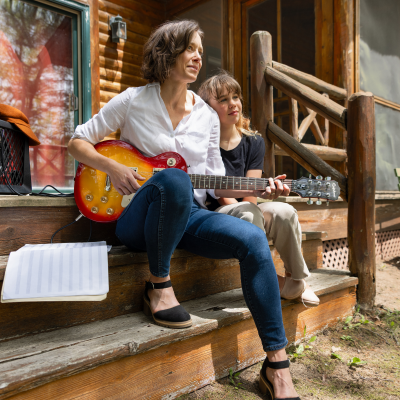5 Composition Rules Every Painter Should Know
Whether you’re an art enthusiast eager to explore a new medium or a complete novice, you can start creating head-turning pieces using five simple composition guidelines.
By Jeannette Pomeroy, Interlochen Online Course Instructor
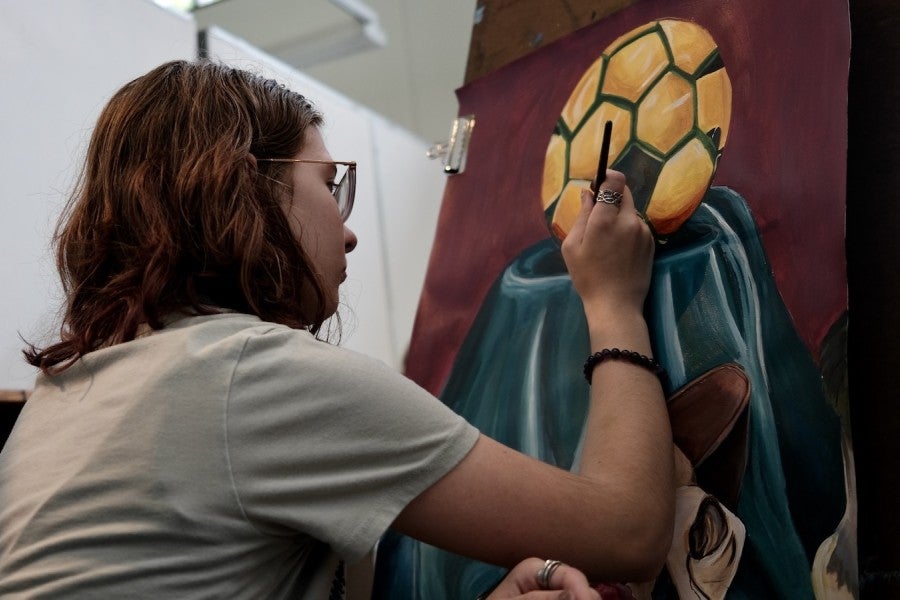
Rule #1. Thirds
Overlay your image with a grid that separates it into thirds, both horizontally and vertically. As you create your composition, consider placing the subject, horizon lines, and other elements along those lines both vertically and horizontally.
Rule #2. Focal point
The focal point is the central subject of a painting or drawing. The focal point should never fall in the center of the canvas. Place the focal point close to one of the horizontal or vertical thirds—possibly even at the intersection of two of those lines
Rule #3. Odd numbers
The human brain and eyes respond better when viewing odd numbers. Odd numbers encourage your eyes to move around the composition, rather than settling on the symmetry of even numbers. Always consider the use of an odd number of objects; for example, lay out three, five, or seven pieces of fruit or one, three, or five people in a grouping.
Rule #4. Positive and negative space
Positive space is taken up by the subject. The negative space is defined as a space around the object or groups of objects. Always consider the positive and negative spaces and shapes as you balance your composition.
Rule #5. Perspective
Perspective is a technique in painting that helps give the illusion of three-dimensional depth on a two-dimensional flat surface, such as a canvas. Perspective helps make objects in a painting look real. You may overlap objects to suggest what is close and what is further away, sizing objects that are further away to appear smaller. You may set perspective from the horizon line—anything above it slopes down towards it; anything below the horizon line slopes up towards it. Or, you may choose a vanishing point on the horizon, a spot where lines that are parallel seem to converge.
Let’s see how this plays out in Edward Hopper’s famous painting, Nighthawks.
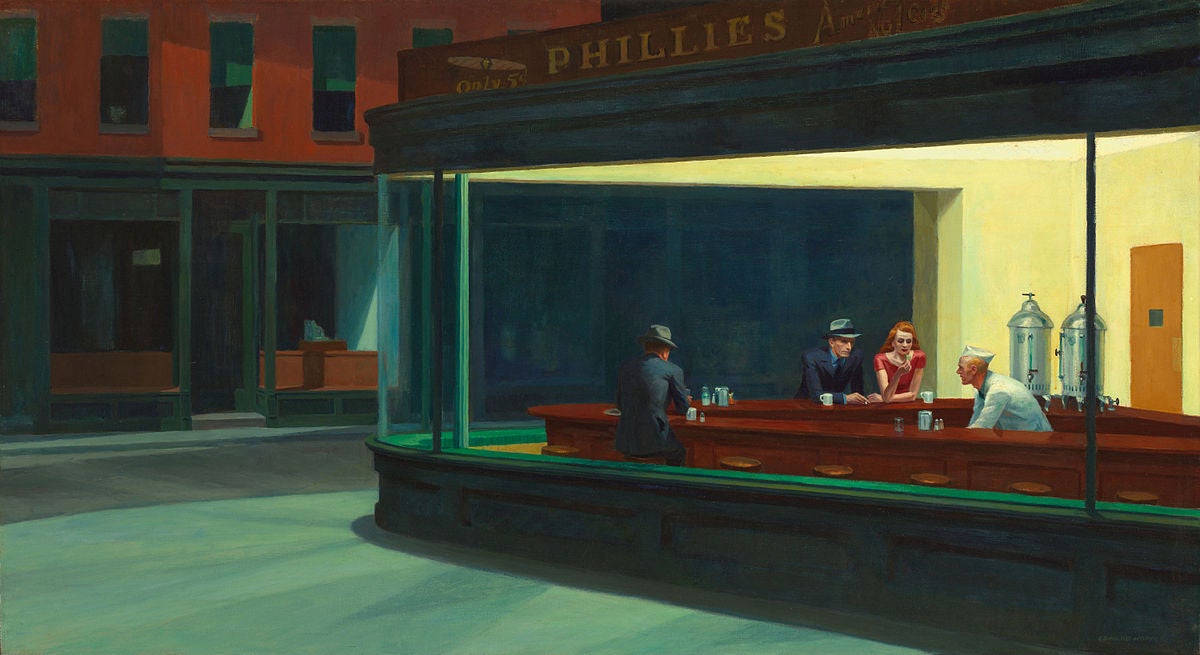
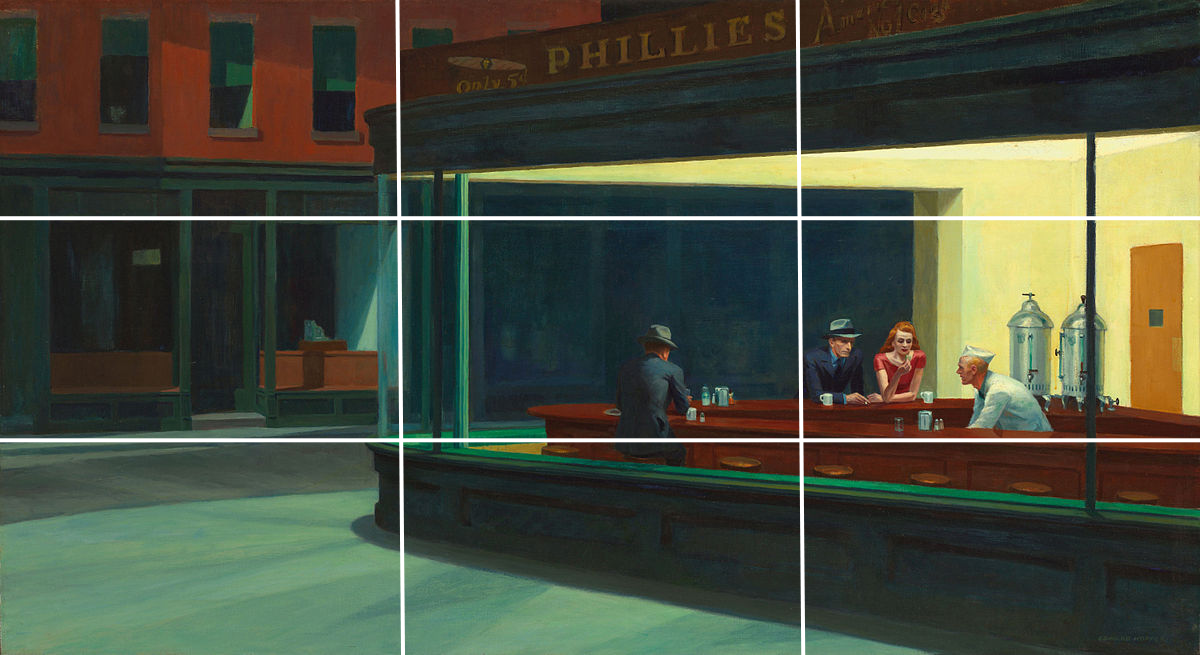
Rule of Thirds
- The diner juts into the painting from the right all the way through the center vertical division.
Focal Point
- Your eye is drawn to the center of the right vertical towards the group of three.
Odd Numbers
- One figure sits alone at the counter, while two others interact with the soda jerk to make an element of three.
- There are five empty bar stools sitting to the right of the single figure and one barstool sitting to the left.
Positive and Negative Space
- Much of the positive space is balanced on the right side of the composition, leaving the center and left verticals to have lots of negative space.
Perspective
- Hopper’s use of perspective bringing the diner into the space from the right points to a very strong conclusion at the left.

Try It.
Look for each of these elements in Pierre Auguste Renoir’s On the Grass, below. Can you find elements of the following in this painting?
- Thirds: What elements in the painting create the sense of thirds, both vertically and horizontally?
- Focal point: What is the focal point, and where is it placed in relation to the painting’s composition?
- Odd numbers: There are two women in the painting. How is this symmetry offset by the “rule of thirds” in the painting’s composition?
- Positive and negative space: The women might be considered the positive space. What is happening in the negative space?
- Perspective: What techniques of perspective create a sense of three-dimensional depth in this painting?
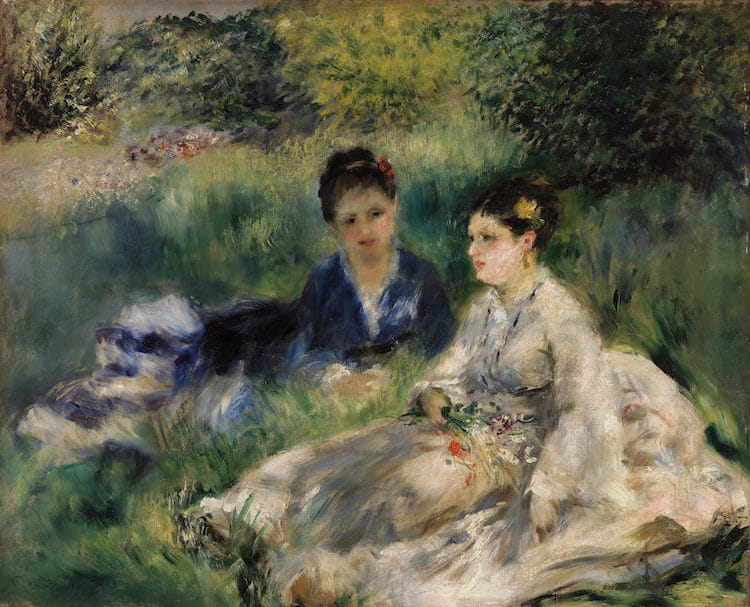
Want to continue learning with Interlochen Online?
Find your perfect course now—the next session starts January 12.
Recommended Online Painting Courses
Each course offers four weeks of instruction and personalized feedback from a professional artist.
introduction to oil painting
Explore color mixing, brushwork, and composition.
still life oil painting
Create your own still life compositions.
Landscape Oil Painting
Paint full landscapes, from underpainting to layering.
Take all three courses and earn a certificate from a well-regarded institution.
The OIL Painting certificate program is perfect for...
✔ Adults looking to boost their creative résumé and LinkedIn profile
✔ Teens who want to earn high school credit for their passion
What are students saying?
Students who enrolled in painting courses rated their experience 4.9 out of 5.
How does it work? Sample a course for free.
✔ | Expert Faculty Receive direct, personalized feedback from a professional artist. |
✔ | Real Growth Develop artistic skills that are important to you in 30 days. |
✔ | Collaborate Connect with peers and instructors on your projects—or just for fun. |


